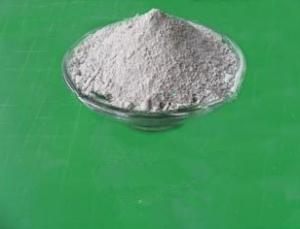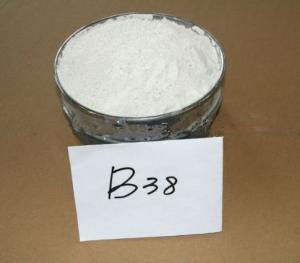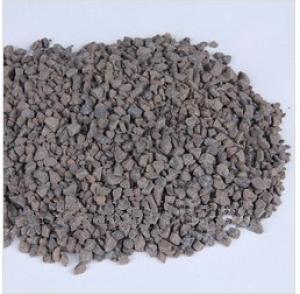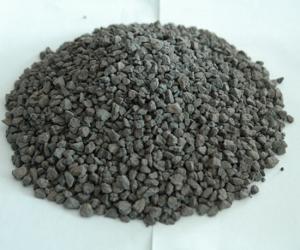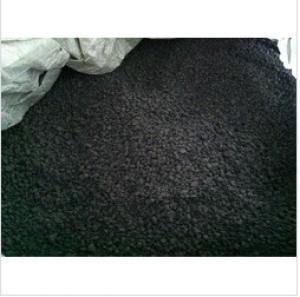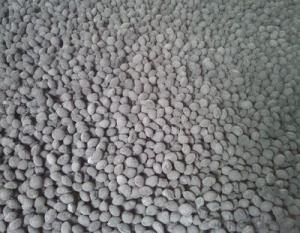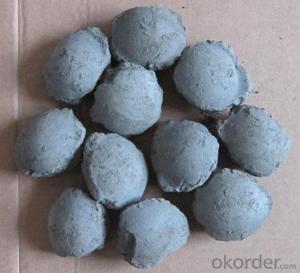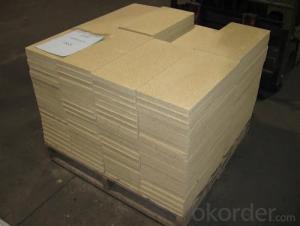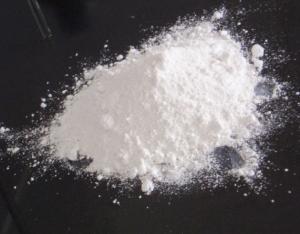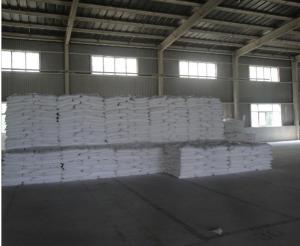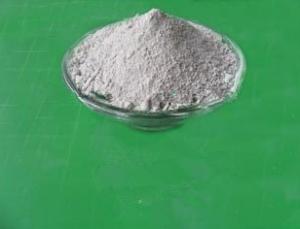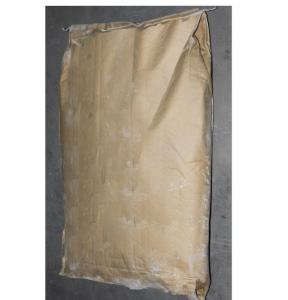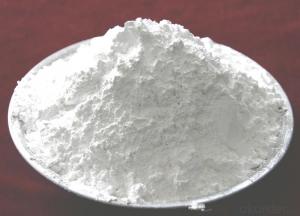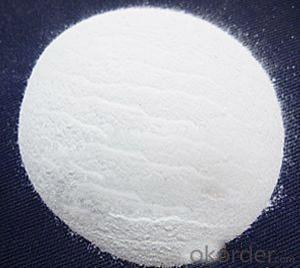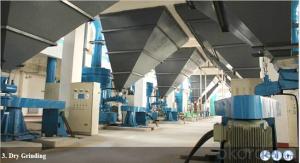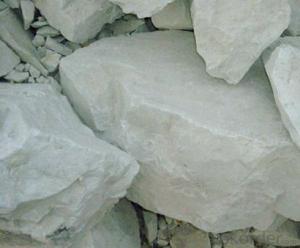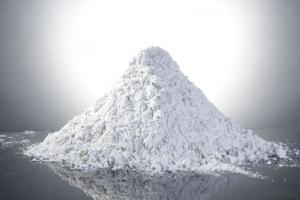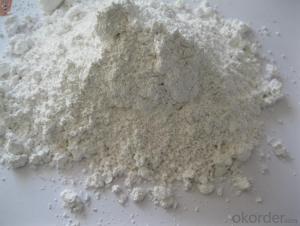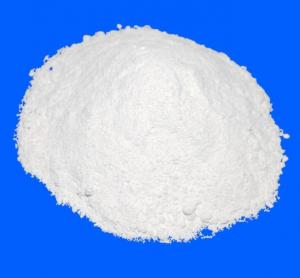Coated Paper Pigment Calcined Kaolin Clay (GB-CK97)
- Loading Port:
- China Main Port
- Payment Terms:
- TT or LC
- Min Order Qty:
- 10 Metric Tons m.t.
- Supply Capability:
- 200,000 Metric Tons per Year m.t./month
OKorder Service Pledge
OKorder Financial Service
You Might Also Like
Detailed Product Description
Coated paper pigment calcined Kaolin Clay GB-CK97 (Anhydrous aluminum silicates) is the best pigments in coated paper making
Typical Physical Properties:
|
Items |
GB-K97 |
|
Brightness(T457) % |
87 min |
|
Solids content (Viscosity: 500mPa·S) % |
70 -72 |
|
Particle Size (-2 micron)% |
98min |
|
pH |
5-7 |
|
Screen residue (325 mesh %) |
0.005max |
|
Refractive index |
1.6 |
|
Dispersion fallout (%) |
0.01 max |
|
Density (g/cm3) |
2.58 |
|
Bulk density (g/cm3) |
0.7 |
|
Moisure (%) |
1.5max |
|
Shaper |
Powdery |
|
Packing |
Plastic bag |
Typical Chemical Properties:
|
SiO2(%) |
Al2O3 (%) |
Fe2O3 (%) |
TiO2 (%) |
CaO(%) |
MgO(%) |
CuO(%) |
K2O(% |
Na2O(%) |
MnO(%) |
|
52+/-2 |
45+/-2 |
0.50max |
1.5max |
0.4max |
0.2max |
0.004max |
0.05max |
0.15max |
0.004max |
- Q:Is it near the clay ore
- Magnetite and hematite deposit in native rock, mica, feldspar is there very little, it is difficult to become China clay resourcesOnly the limonite is weathering secondary ore, mica, feldspar will resident may be near, the clay;
- Q:The difference between calcined clay and calcined kaolin
- Generally speaking, the strengthening effect of hard, clay on hardness, elongation strength, tensile strength or wear resistance is larger than that of soft clayBut the hard clay and soft clay (hard Claysoft clay) is mixed with rubber as raw material mixed hardness, tensile strength training plus sulfur product for compliance, which can not be a clear division, but hard clay particles were relatively small, at 2 below for more than 80%, soft clay is about 50%. The proportion of around 2.6. The general kaolin is acidity, pH value is about 4~5, but also the use of alkali or amine treatment, the pH value tends to alkaline. Kaolin better than calcium carbonate in the tensile strength and hardness increase and mechanical strength has good performance, but the degree of poor white, permanent compression deformation, and sulfur is slow (because of the pH value of 4.5.5, delay the sulfur addition tendency), glycerol, ethylene glycol, can amine (Glycol) as activating agent to improve the properties of sulfur. The clay at suitable temperature (600~800 DEG C) loses water of crystallization calcination (OH) the crystal structure collapse, in order to improve live Because the free ion (ion) is adsorbed and fixed, the insulation effect can be improved, and the treatment can decompose the organic matters and increase the whiteness, and because the size is neat, the dispersion is good
- Q:Does the whiteness of washed kaolin mean natural whiteness or whiteness after calcination?
- Washed kaolin is generally used as a filler for paper making. What's more, calcined kaolin mainly refers to hard kaolin at present
- Q:What is the use of kaolin?
- Containing impurities, yellow, gray, green, rose and other colors. The ore was dense block or loose soil, soft, soapy, hardness less than nails. Specific gravity 2. 4~2. 6. The tongue is moist after drying. High refractoriness, up to 1770~1790 degrees centigrade. Medium and low plasticity, with good insulation and chemical stability. High degree of calcination, ranging from 60~90%. Mainly used for making daily ceramics, industrial ceramics, building sanitary ceramics and refractory materials. It is also used as filling or white pigment for paper, rubber and plastic, paint, textile, etc..
- Q:Where are the main differences between kaolin and kaolinite?
- Kaolin pure white, because of impurities can be dyed other colors. Aggregate dull or waxy. Extremely cleavage, hardness 2.0~3.5, relative density 2.60~2.63. Dense block with a rough sense, dry with water absorption, wet state of plasticity, but water does not expand.
- Q:How to remove the kaolin from the stone?
- Kaolin has strong acid resistance, but its alkali resistance is poor. Try using this nature!
- Q:Can pure kaolin or montmorillonite burn pottery? If not, what do you need to add?
- More than two of the hard nature of the poor, so the use of ceramics in relatively small, mainly chemical raw materials. However, because of the scarcity of soft soil and higher prices, many manufacturers have been studying the hard kaolin and other viscous ores to achieve the above results. That is, it can reduce the cost and produce better ceramics.
- Q:Is kaolin soluble in water?The dispersion of kaolin in water is very unstable,At least stable 5-6 hours
- At present, the global total output of about 40 million tons of kaolin (the data belonging to the simple country and production together, in which no statistical ore trade volume, including more repeat calculation), which is about 23 million 500 thousand tons of refined soil. The paper industry is the largest consumption Department of refined kaolin, accounting for about 60% of the total consumption of kaolin. According to data provided by Temanex consulting Canada, the total output of paper and paperboard in the world was about 319 million tons in 2000, and the total amount of kaolin used in the world's paper coating was about 13 million 600 thousand tons.
- Q:What are the differences between kaolin and kaolin? What are the chemical constituents?
- Effects: 1., firing pottery,.2. firing pottery or coarse porcelain kaolin
- Q:Will surface treated kaolin be more insulated than untreated?
- Kaolin is an insulating material. If it is to increase the insulation of kaolin products, quartz, feldspar, calcite or mica stone should be added. If glaze, the effect will certainly be better.
1. Manufacturer Overview |
|
|---|---|
| Location | Shanxi, China (Mainland) |
| Year Established | 2007 |
| Annual Output Value | US$5 Million - US$10 Million |
| Main Markets | North America South America Eastern Europe Southeast Asia Africa Oceania Mid East Eastern Asia Western Europe |
| Company Certifications | The AAA class Standard of International Quality Credit Rating;Audited Supplier Certificate;Quality Management System Certification Certificate |
2. Manufacturer Certificates |
|
|---|---|
| a) Certification Name | |
| Range | |
| Reference | |
| Validity Period | |
3. Manufacturer Capability |
|
|---|---|
| a)Trade Capacity | |
| Nearest Port | TIANJIN |
| Export Percentage | 11% - 20% |
| No.of Employees in Trade Department | 3-5 People |
| Language Spoken: | English, Chinese, Japanese |
| b)Factory Information | |
| Factory Size: | 1,000-3,000 square meters |
| No. of Production Lines | 4 |
| Contract Manufacturing | OEM Service Offered Design Service Offered Buyer Label Offered |
| Product Price Range | average |
Send your message to us
Coated Paper Pigment Calcined Kaolin Clay (GB-CK97)
- Loading Port:
- China Main Port
- Payment Terms:
- TT or LC
- Min Order Qty:
- 10 Metric Tons m.t.
- Supply Capability:
- 200,000 Metric Tons per Year m.t./month
OKorder Service Pledge
OKorder Financial Service
Similar products
New products
Hot products
Hot Searches
Related keywords
